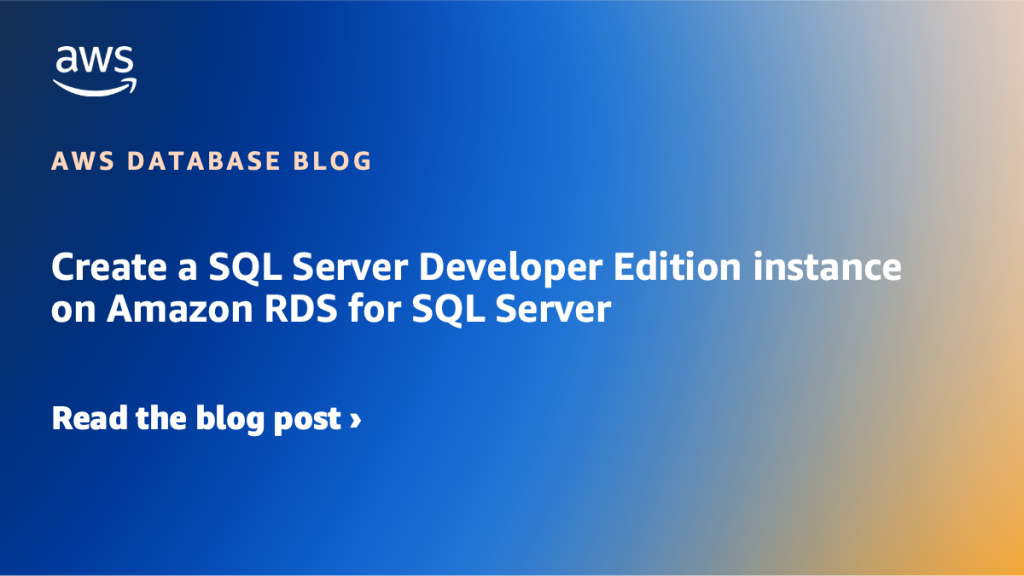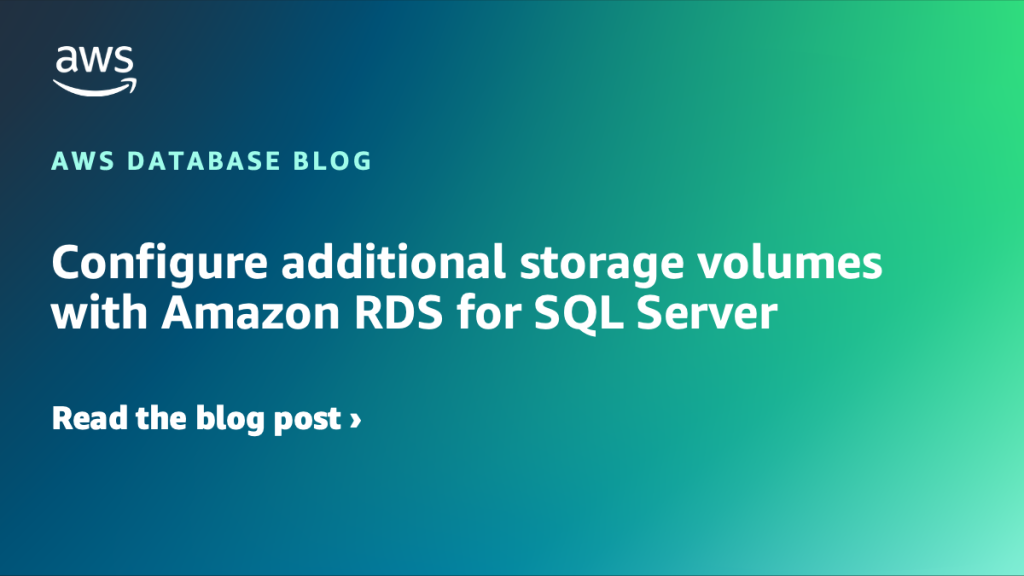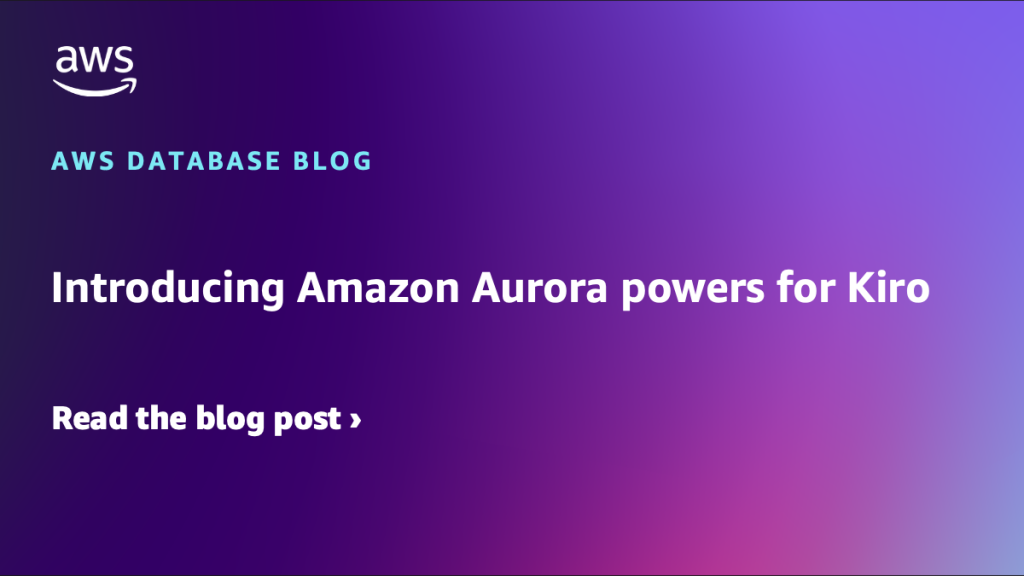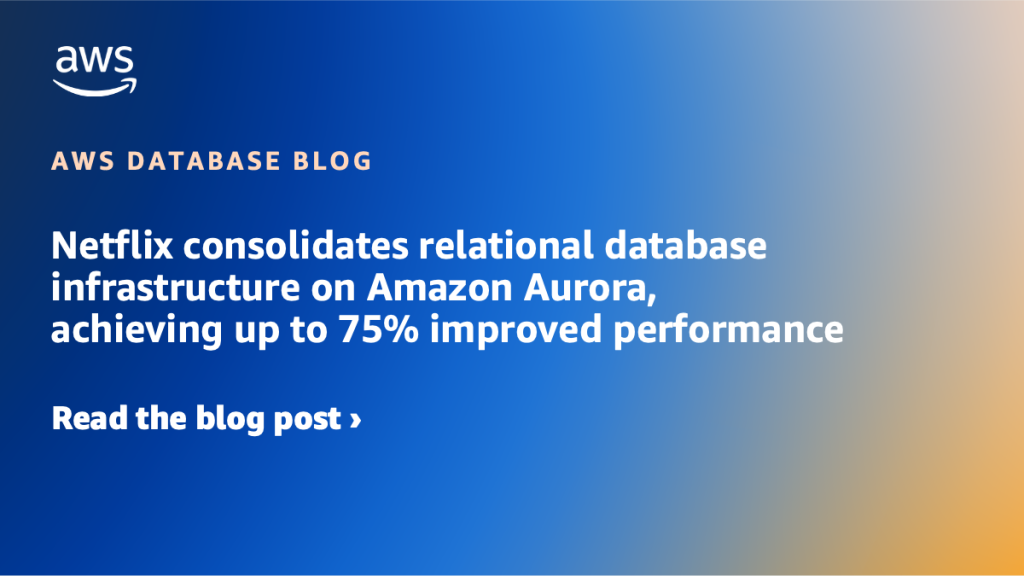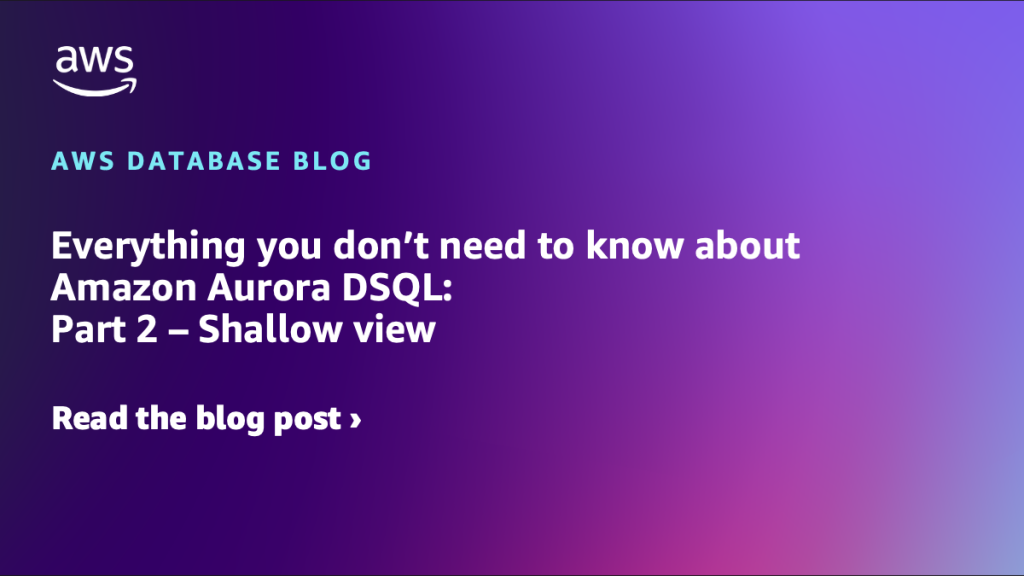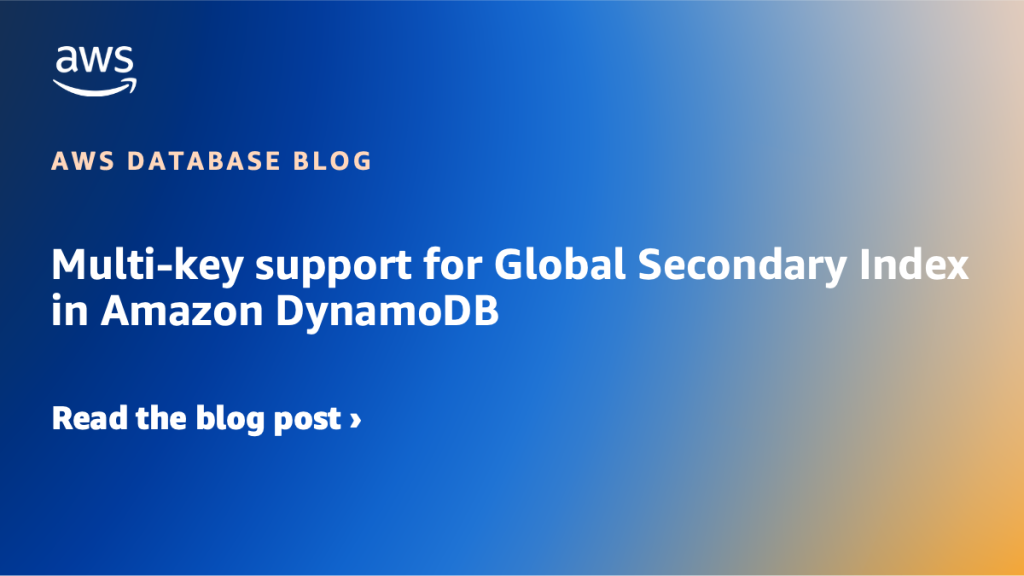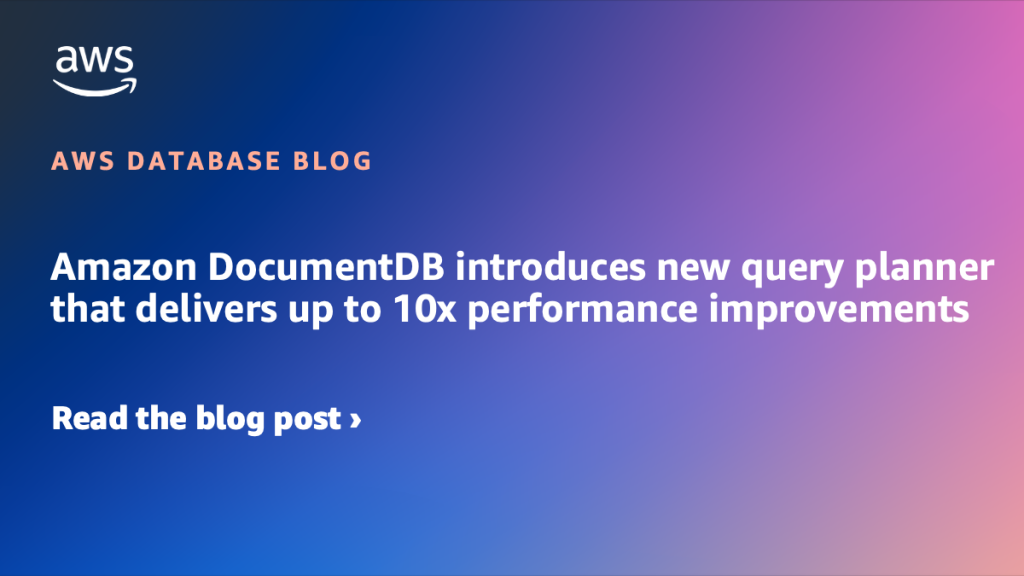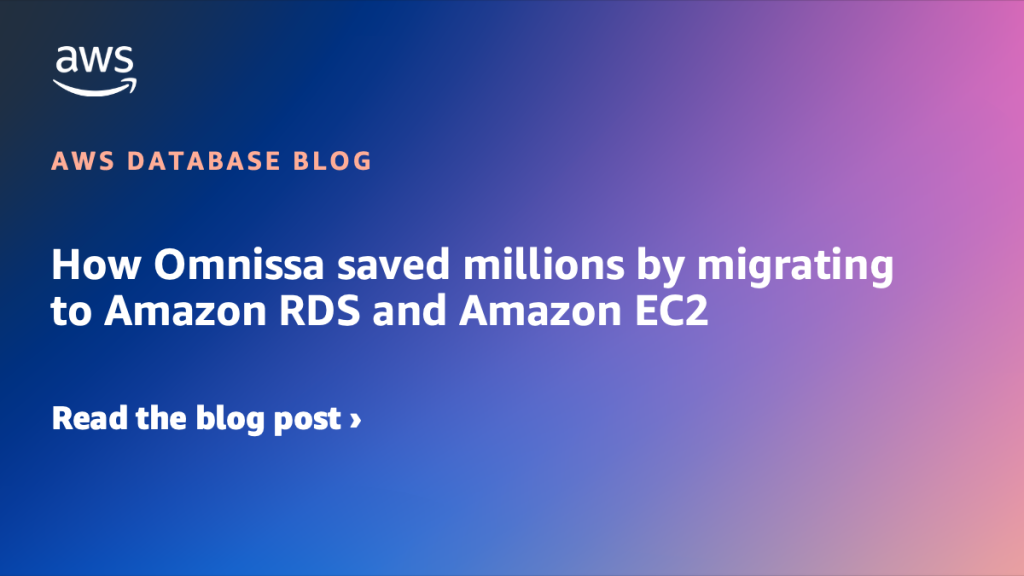AWS Database Blog
Category: Intermediate (200)
Create a SQL Server Developer Edition instance on Amazon RDS for SQL Server
In this post, we show you how to create and deploy SQL Server Developer Edition on Amazon RDS.
Configure additional storage volumes with Amazon RDS for SQL Server
With the introduction of the additional storage volume feature, you can now attach up to three additional storage volumes to your Amazon RDS for SQL Server instances. By using this feature, you can distribute your data and log files across multiple volumes. This enhancement offers more granular control over storage configuration and performance optimization. In this post, you will learn about the following scenarios: Adding a new storage volume, Scaling an existing storage volume, Restoring a database on an additional storage volume, and Deleting a storage volume.
Introducing Amazon Aurora powers for Kiro
In this post, we show how you can turn your ideas into full-stack applications with Kiro powers for Aurora. We explore how a new innovation, Kiro powers, can help you use Amazon Aurora best practices built into your development workflow, automatically implementing configurations and optimizations that make sure your database layer is production-ready from day one.
Netflix consolidates relational database infrastructure on Amazon Aurora, achieving up to 75% improved performance
Netflix operates a global streaming service that serves hundreds of millions of users through a distributed microservices architecture. In this post, we examine the technical and operational challenges encountered by their Online Data Stores (ODS) team with their current self-managed distributed PostgreSQL-compatible database, the evaluation criteria used to select a database solution, and why they chose to migrate to Amazon Aurora PostgreSQL to meet their current and future performance needs. The migration to Aurora PostgreSQL improved their database infrastructure, achieving up to 75% increase in performance and 28% cost savings across critical applications.
Everything you don’t need to know about Amazon Aurora DSQL: Part 2 – Shallow view
In this second post, I examine Aurora DSQL’s architecture and explain how its design decisions impact functionality—such as optimistic locking and PostgreSQL feature support—so you can assess compatibility with your applications. I provide a comprehensive overview of the underlying architecture, which is fully abstracted from the user.
Multi-key support for Global Secondary Index in Amazon DynamoDB
Amazon DynamoDB has announced support for up to 8 attributes in composite keys for Global Secondary Indexes (GSIs). Now, you can specify up to four partition keys and four sort keys to identify items as part of a GSI, allowing you to query data at scale across multiple dimensions. In this post we show you how to design similar data models more efficiently using Global Secondary Indexes with the additional attribute support in composite keys and provide examples of DynamoDB data models with reduced complexity.
Amazon DocumentDB (with MongoDB compatibility) introduces new query planner that delivers up to 10x performance improvements
On Oct 28, 2025, Amazon DocumentDB (with MongoDB compatibility) introduced a new query planner (NQP) to improve database performance and stability. The redesigned architecture uses improved cost estimation techniques and optimized algorithms for smarter query plan selection.
Amazon Keyspaces now supports logged batches for atomic, multi-statement operations
Today, we are announcing Amazon Keyspaces (for Apache Cassandra) support for logged batches, a powerful feature that brings atomic, all-or-nothing write operations to your Apache Cassandra-compatible workloads. In this post, we explore the benefits of logged batches, demonstrate how to set up and run them, and discuss important considerations when using logged batches with Amazon Keyspaces.
How Alight Solutions achieved 60% cost savings with Amazon ElastiCache for Valkey
Alight Solutions is a leading cloud-based human capital technology and services provider that has focused its operations on integrated benefits administration, healthcare navigation, and employee experience solutions. In this post, we share how Alight Solutions transformed their caching infrastructure using ElastiCache while maintaining strict performance requirements, achieving over 60% cost reduction, 70-80% reduction in operational overhead, migration of gigabytes of data with sub-0.5 millisecond performance for millions of users, and a 99.99% reduction in incident rate.
How Omnissa saved millions by migrating to Amazon RDS and Amazon EC2
Omnissa is a digital workspace technology leader that delivers smart, seamless, and secure digital work experiences for organizations worldwide. It serves 26,000 customers, including the top seven of the Fortune 500 companies. In this post, we walk through the Omnissa’s journey of migrating its mission-critical UEM platform and self-managed SQL Server workloads from VMware Cloud on AWS (VMC-A) to Amazon RDS for SQL Server and its application servers to Amazon EC2.
